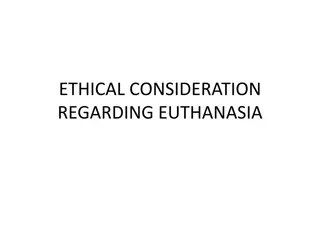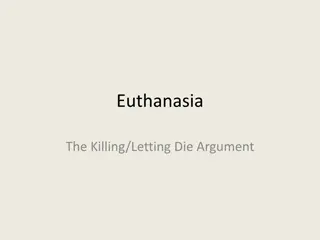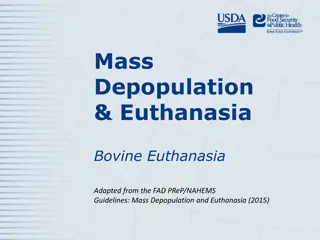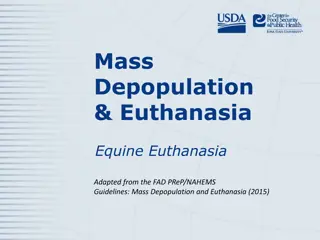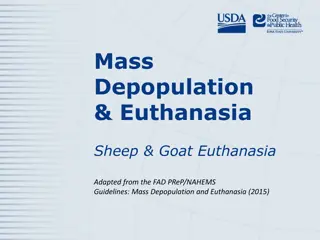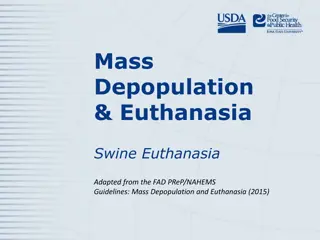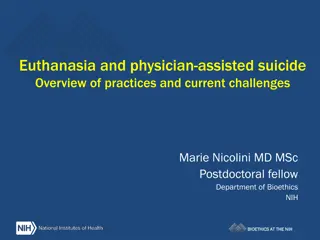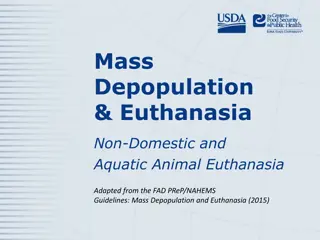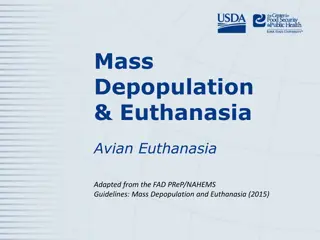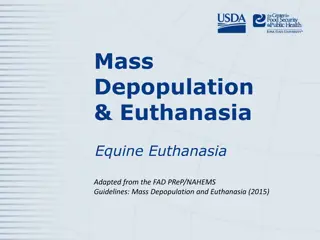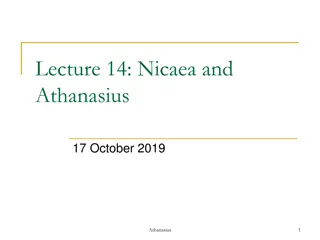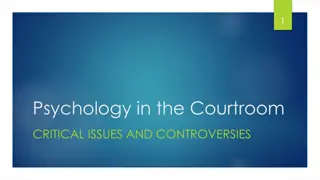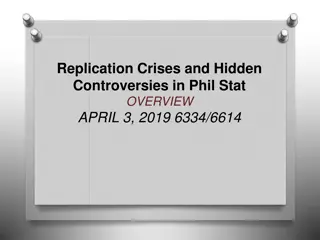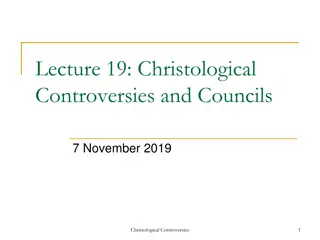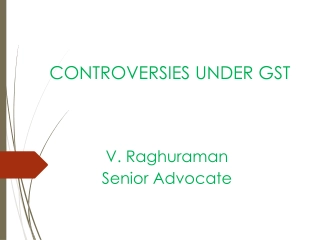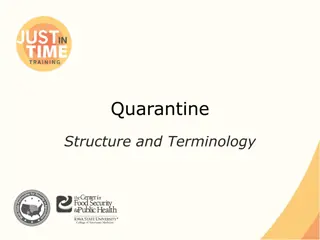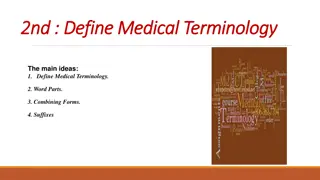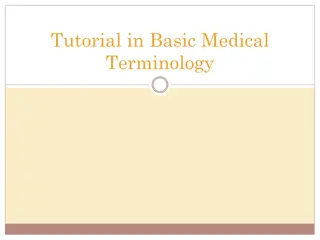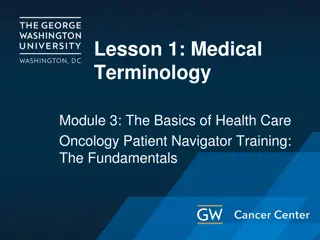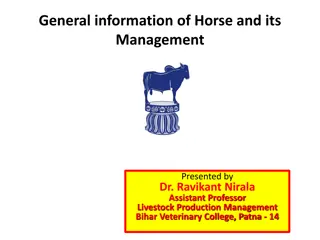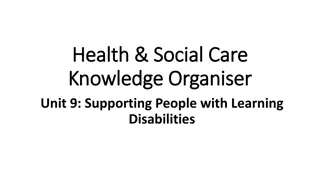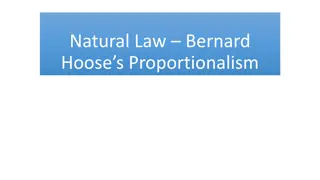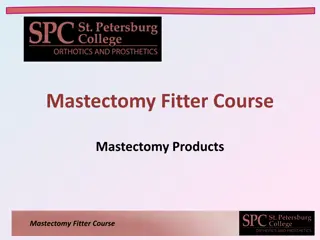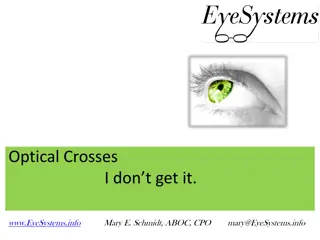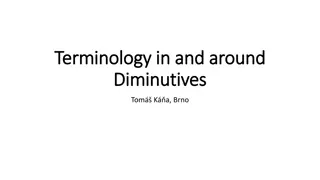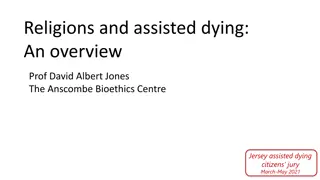Understanding Euthanasia: Terminology, Types, and Controversies
Euthanasia encompasses various forms such as voluntary, involuntary, active, passive, and physician-assisted suicide, each raising ethical and legal dilemmas. Terminology and definitions related to euthanasia are crucial in understanding the complexities and debates surrounding end-of-life decisions.
Download Presentation

Please find below an Image/Link to download the presentation.
The content on the website is provided AS IS for your information and personal use only. It may not be sold, licensed, or shared on other websites without obtaining consent from the author. Download presentation by click this link. If you encounter any issues during the download, it is possible that the publisher has removed the file from their server.
E N D
Presentation Transcript
Some Background: Voluntary Involuntary Voluntary Passive Euthanasia Involve taking the patient off live- preserving treatments. Involuntary Passive Euthanasia Passive Voluntary Active Euthanasia Involve giving the patient a life-ending treatment . Involuntary Active Euthanasia Active No patient consent. Patient consent.
Terminology Active euthanasia Performing an action that directly causes someone to die; mercy killing Passive euthanasia Allowing someone to die by not doing something that would prolong life
Euthanasia Voluntary euthanasia Euthanasia performed when competent patients voluntarily request or agree to it Involuntary euthanasia Bringing about someone s death against her will or without asking for her consent while she is competent to decide Nonvoluntary euthanasia Euthanasia performed when patients are not competent to choose it for themselves and have not previously disclosed their preferences
Active/Passive Euthanasia Some contend that the distinction is crucial: active euthanasia is killing, but passive euthanasia is letting die. The AMA has sanctioned the distinction. Some argue that there is no morally significant difference between mercifully killing a patient and mercifully letting the patient die.
Physician-Assisted Suicide A patient s taking his or her own life with the aid of a physician The AMA has denounced PAS. Many people (including some physicians) support its use. It is legal only in Oregon.
Definitions of Death Traditional view Death is the cessation of breathing and heartbeat. Standard in law and medicine Whole brain view: An individual should be judged dead when all brain functions permanently stop. Alternative view Higher brain standard: Individuals are dead when the higher brain functions responsible for consciousness permanently close down.
Active Voluntary Euthanasia Arguments for: Autonomy: Respecting people s inherent right of self-determination means respecting their autonomous choices about ending their lives. Beneficence: If we are in a position to relieve the severe suffering of another without excessive cost to ourselves, we have an obligation to do so.
Active Voluntary Euthanasia Arguments against: Moral difference between killing and letting die: Killing is worse than letting die, so giving a patient a lethal injection to effect an easy death is wrong, but disconnecting his feeding tube may be permissible. Moral difference between intending someone s death and not intending but foreseeing it: The former is wrong; the latter is permissible.
The Autonomy Argument for Euthanasia Autonomous persons should have the right to choose how they will live and how they will die. The right is preeminent, limited only when their choices might bring harm to others. This right to die, though strong, does not necessarily compel others.



